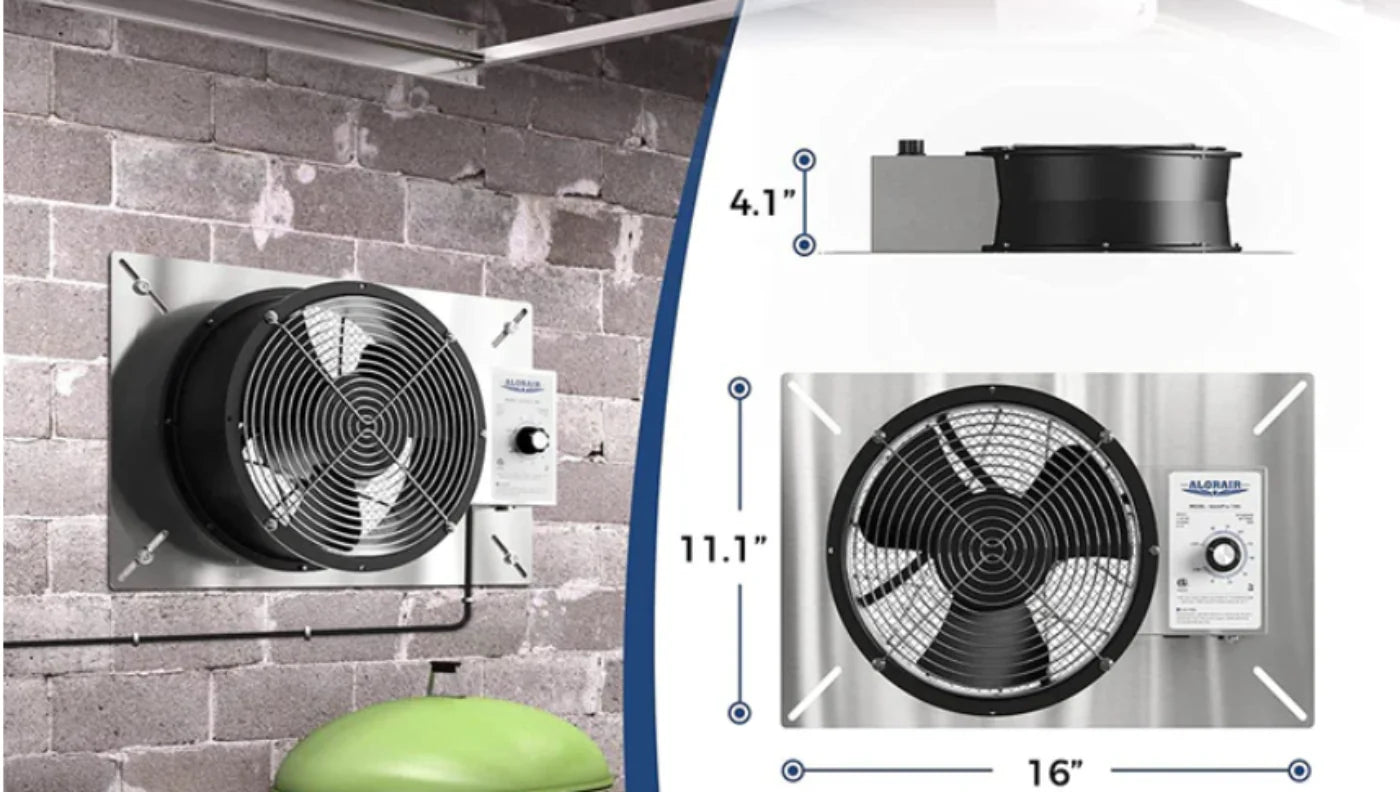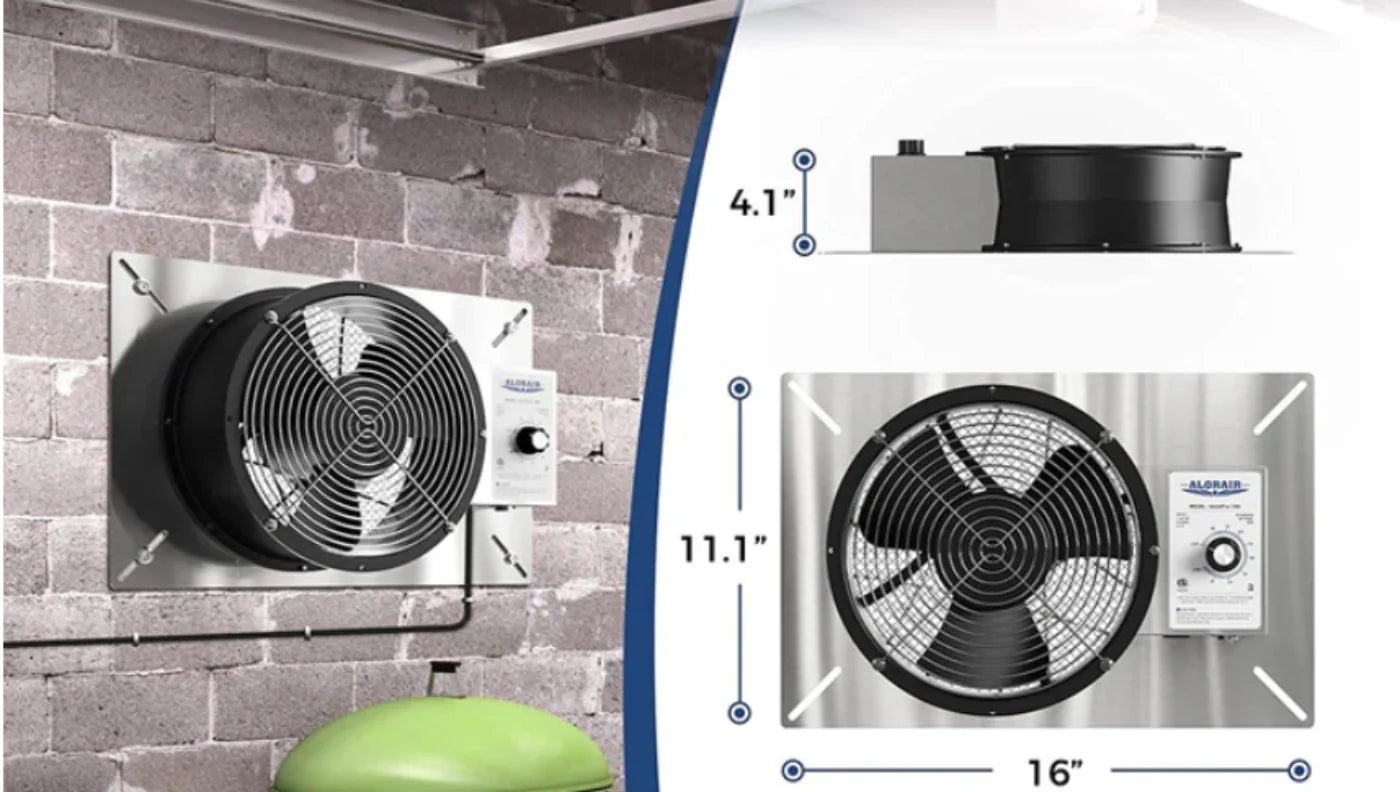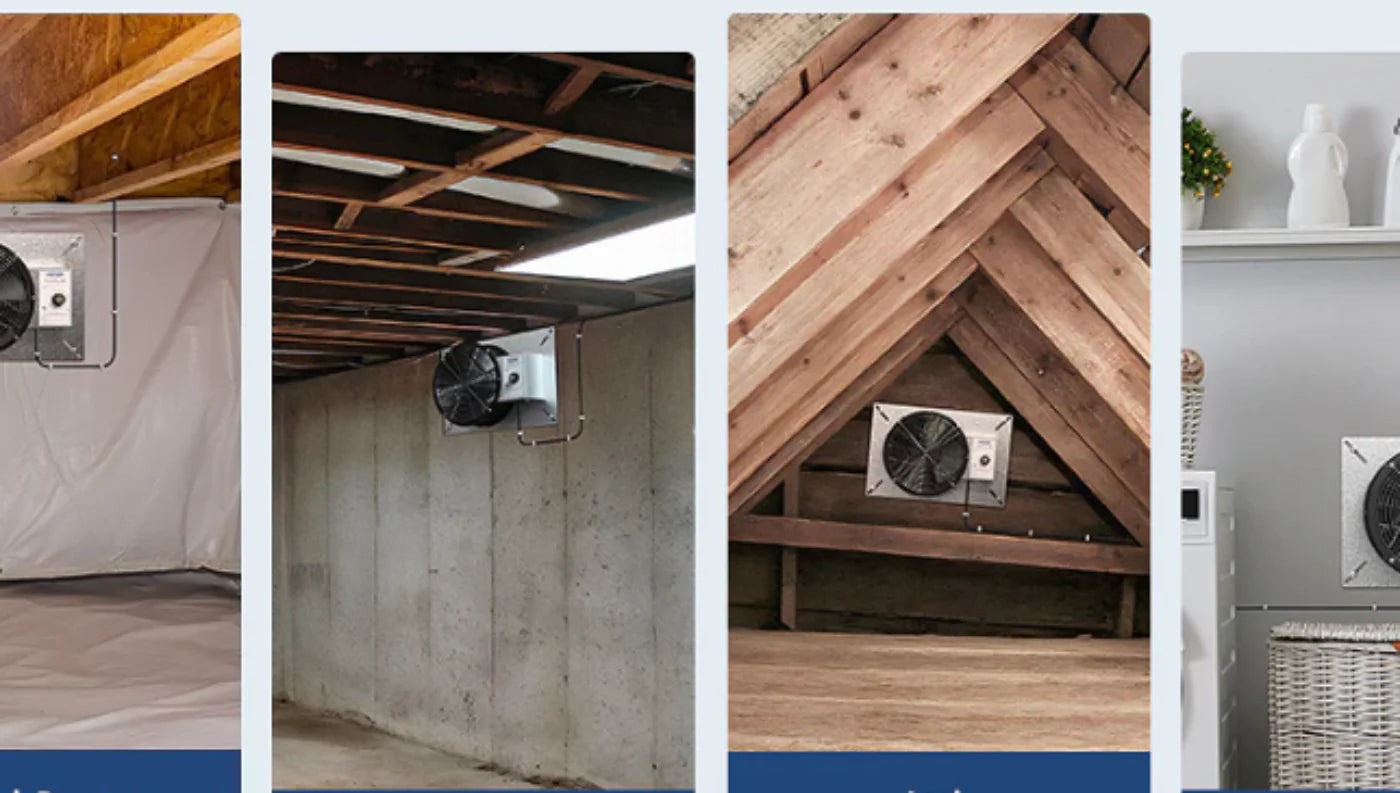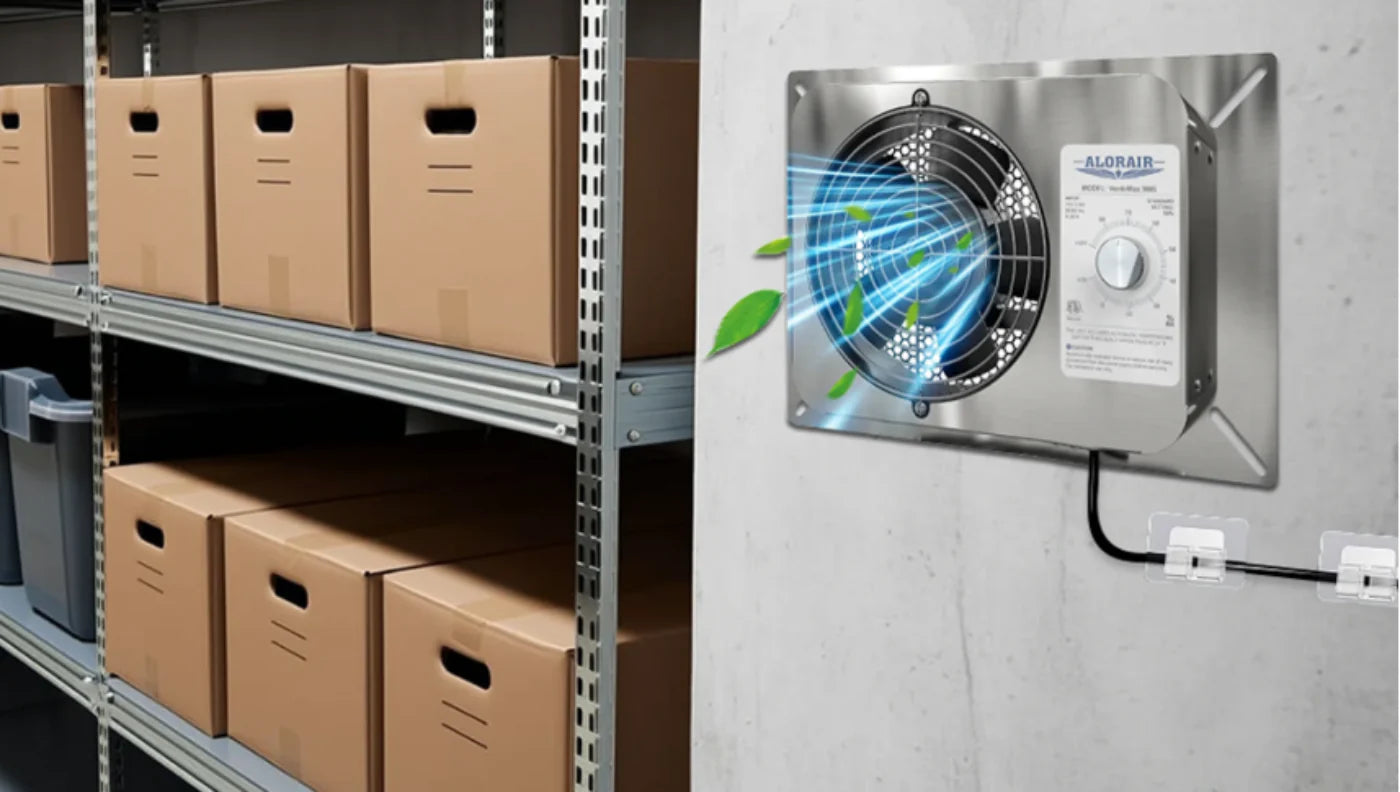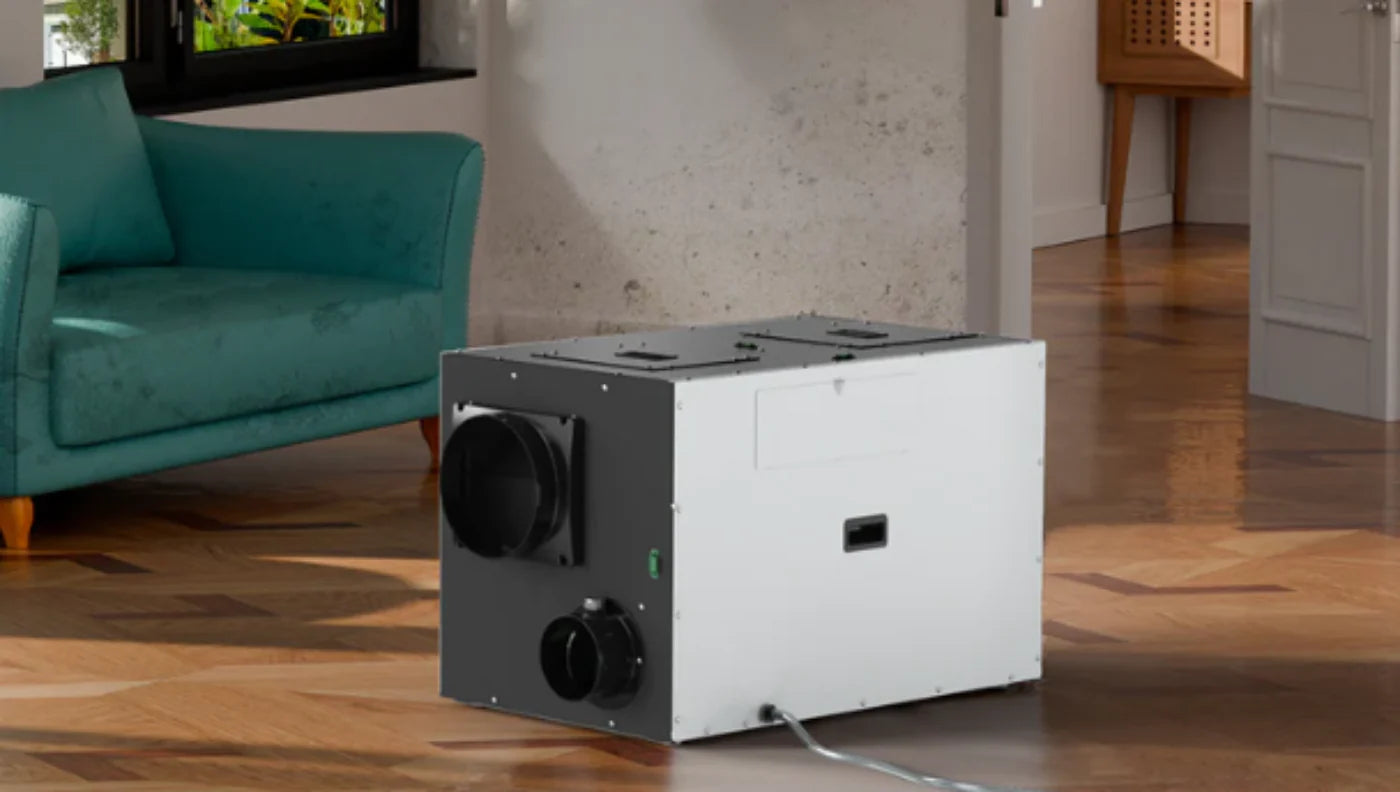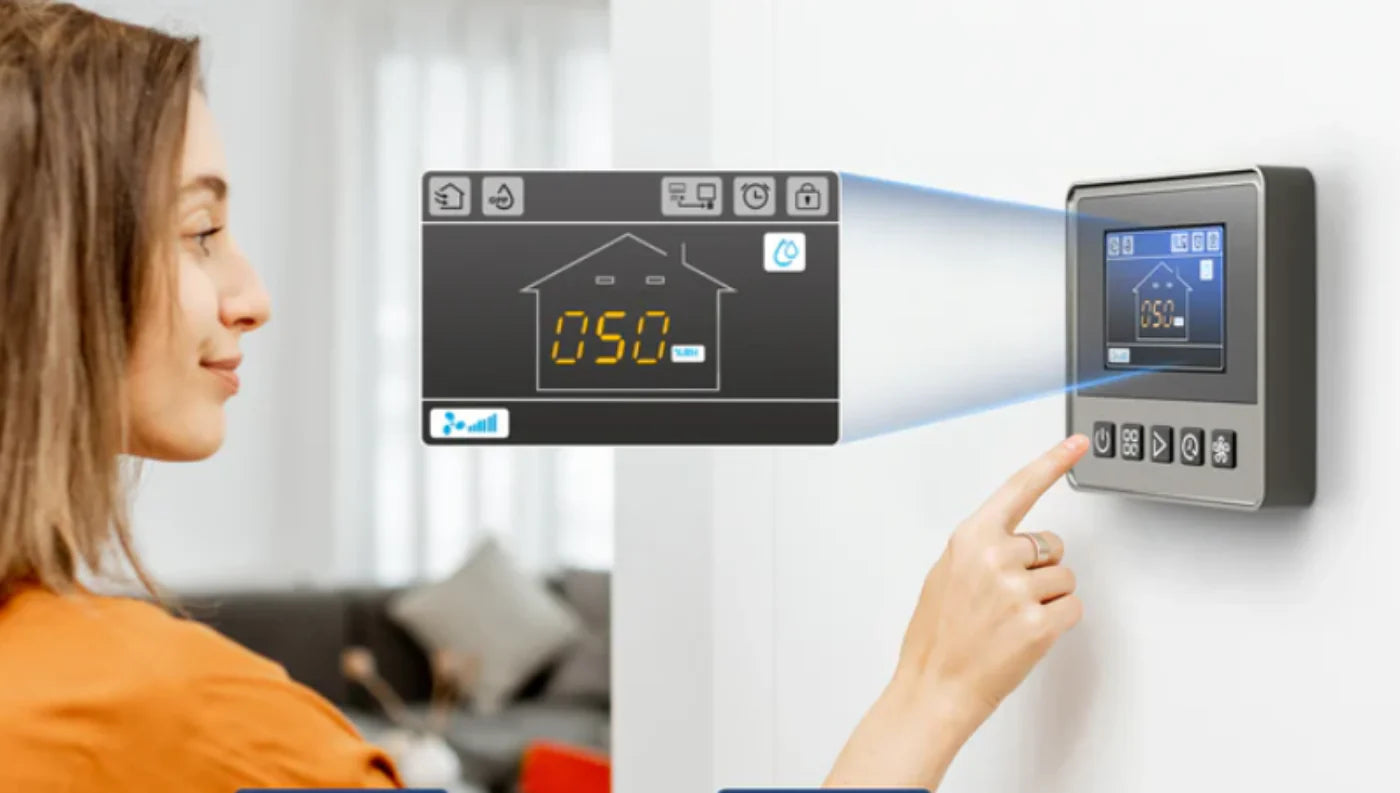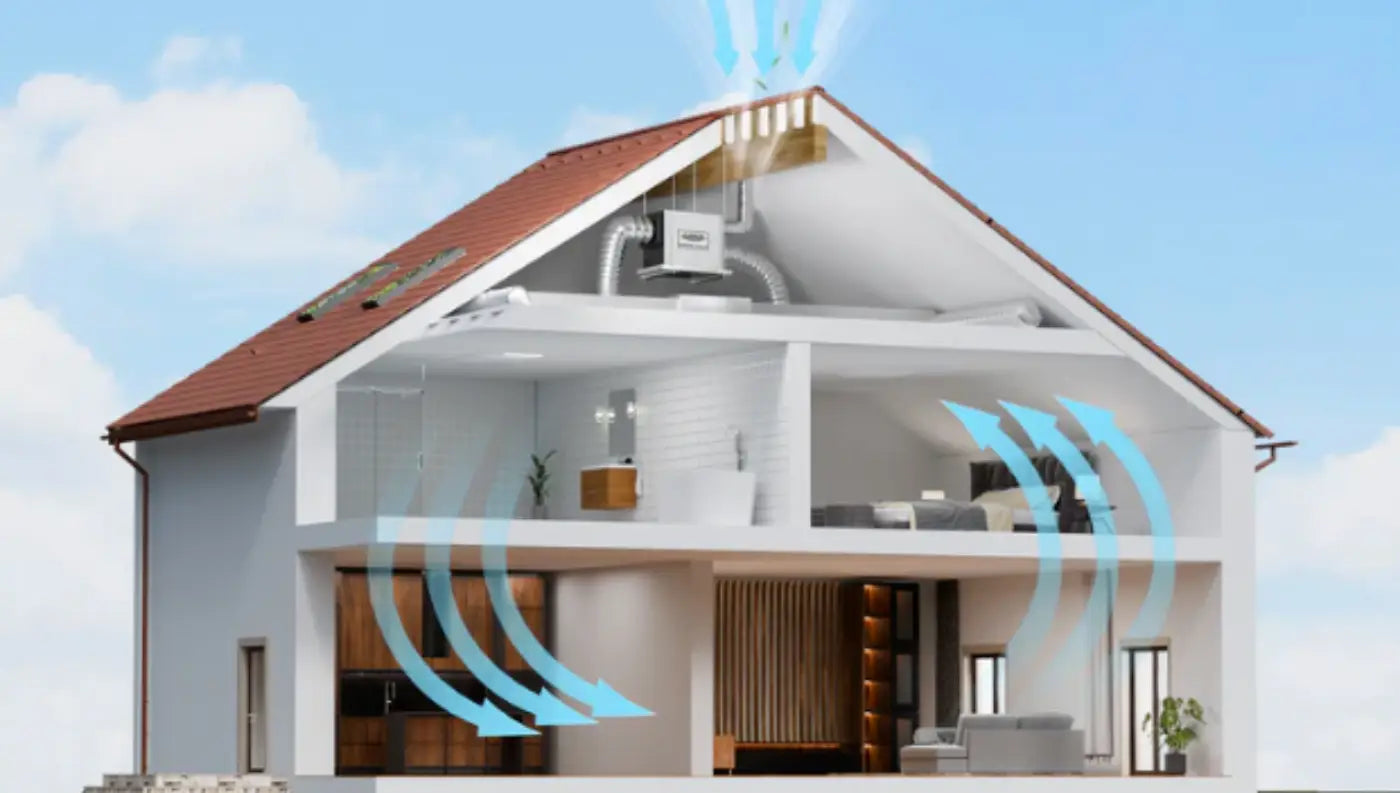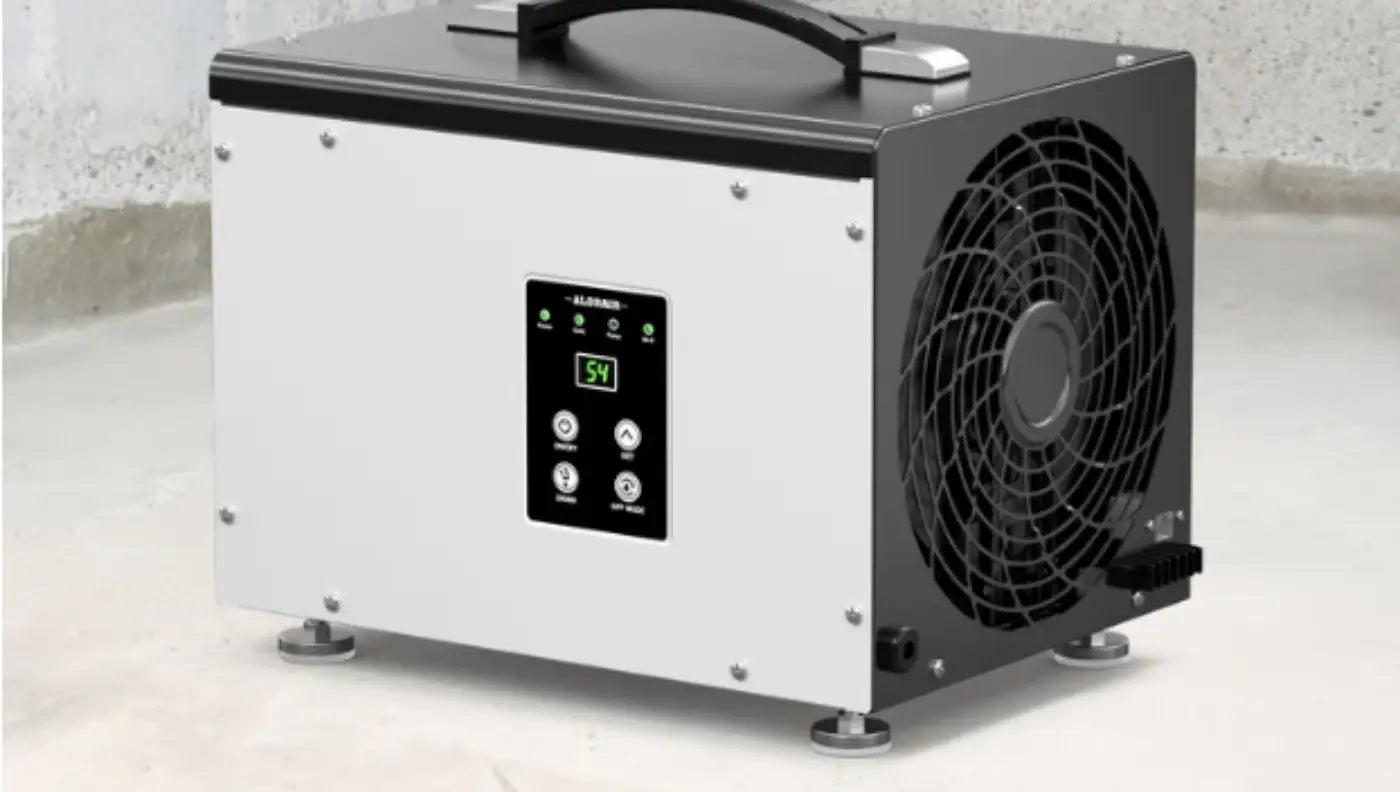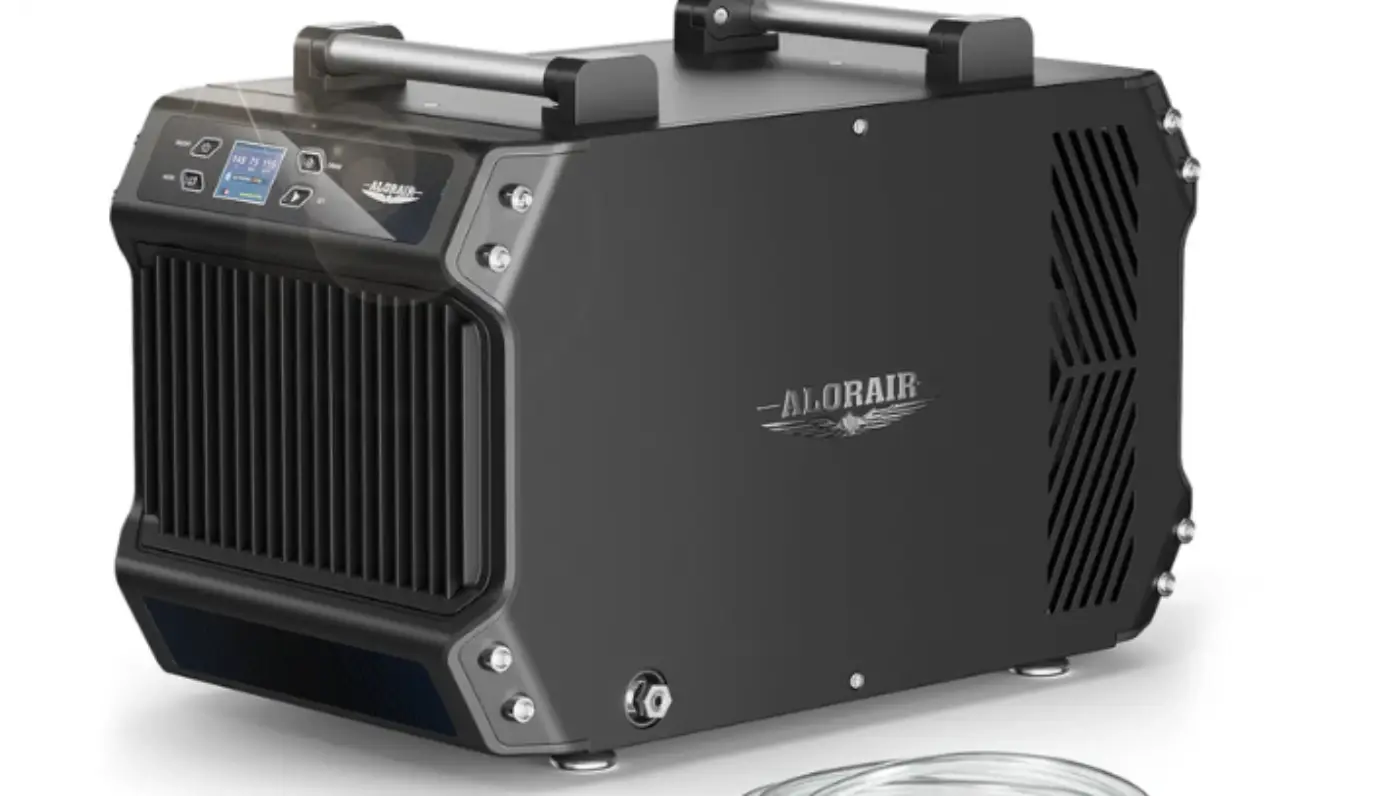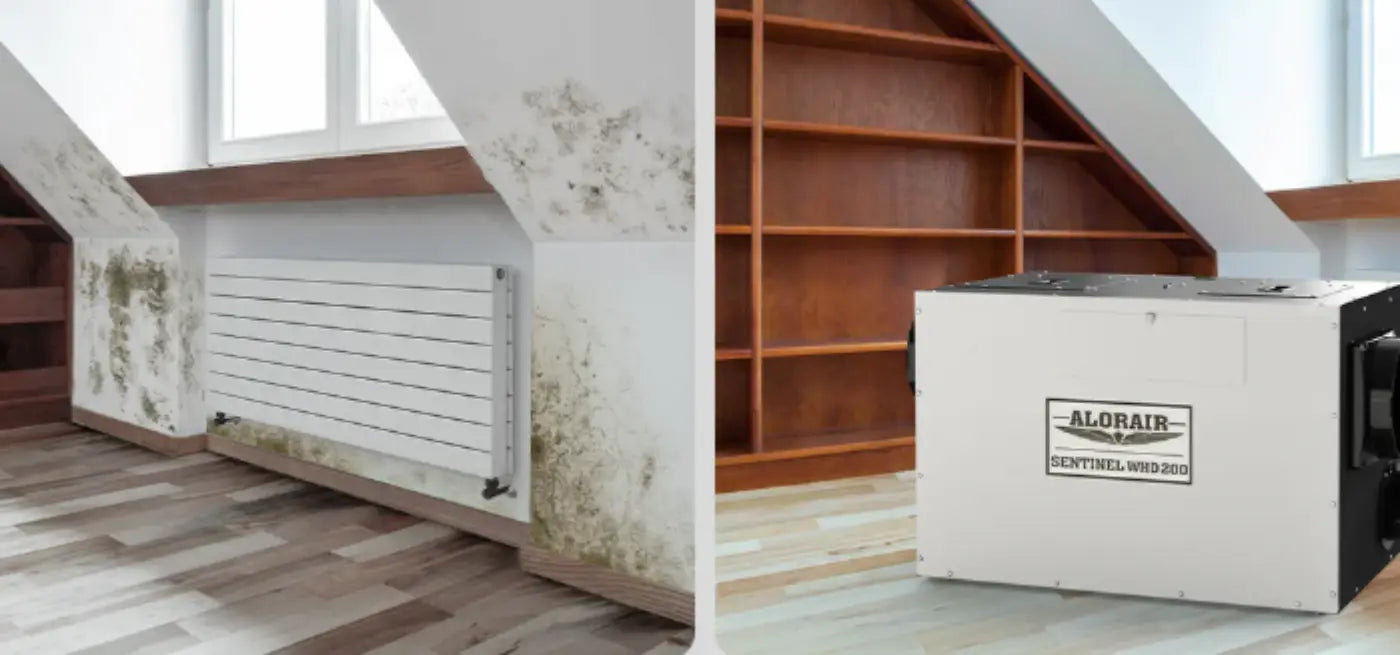If your crawl space smells musty, shows condensation on ducts or joists, or keeps creeping above ~50–60% relative humidity, you’re right to ask whether a dehumidifier is the fix. This guide explains—plain and simple—when a dehumidifier is essential, how it fits with encapsulation (sealing the crawl space) and how it compares to ventilation fans.
You’ll also get quick checklists, placement/drain tips, and answers to the most common questions.
The Short Answer
- Yes, most homes benefit from a crawl-space dehumidifier—especially in humid or mixed climates, or anytime the space is vented or leaky.
- Encapsulation reduces the moisture load, but best practice is to condition the space (either by gently supplying house air or using a dedicated dehumidifier) to hold ~45–55% RH. Building-science guidance and codes explicitly call for supply air or dehumidification in conditioned (sealed) crawl spaces.
- Ventilation alone is unreliable in humid weather. Bringing warm, moist outdoor air through vents can raise crawl-space humidity, not lower it.
Why Humidity Control Matters
When air in the crawl space stays above ~60% RH, mold and wood-rot risk increase, odors move into living areas, and energy bills can climb. The EPA recommends keeping indoor RH below 60%, ideally 30–50% for health and durability. A dehumidifier gives you precise control in that zone.
Encapsulation, Ventilation, Dehumidification—What’s What?

Encapsulation (Sealing)
- What it does: Adds a sealed vapor barrier to the floor (and often walls/columns), closes vents, and air-seals gaps. This blocks ground moisture and outside humid air.
- What it doesn’t do: Encapsulation alone doesn’t actively remove moisture already in the air. You still need to condition the air—usually the easiest, most consistent way is with a dehumidifier. Building-science guidance: conditioned crawl spaces must receive supply air or have dehumidification.
Ventilation Fans
- What they do: Move air. Fans can help exhaust odors or soil gases, but they don’t remove water from the air. In humid weather, outdoor air pulled into the crawl space often increases RH.
- When they help: As part of a broader plan (drainage fixed, liner installed), some projects use controlled exhaust or small supply air for code/air-quality reasons—but moisture control still relies on dehumidification in many climates.
Dehumidifier
- What it does: Physically removes water from the air to hit a target RH (typically ~50%).
- When it’s essential:
-
- Humid or mixed climates (long, sticky summers).
- Vented or leaky crawl spaces (or while you plan encapsulation).
- Encapsulated spaces that still need conditioning to stay in the EPA range.
Does an Encapsulated Crawl Space Need a Dehumidifier?

Usually, yes. Encapsulation cuts the load, but you still must condition the crawl space. Building-science authorities are clear: for a sealed (conditioned) crawl space, provide a small amount of supply air from the home or install a dehumidifier. Many owners prefer a dehumidifier because it’s simple, predictable, and measurable (you set 50% RH, and it holds).
Dehumidifier in a Crawl Space Without Encapsulation
It can still work and often makes a big difference, especially if you:
- Fix bulk water first (gutter extensions, grading, sump if needed),
- Close obvious leaks/gaps and minimize outside air, and
- Place and drain the unit correctly (see quick tips below).
You may run more hours (and see higher seasonal energy use) versus an encapsulated space, because humid outdoor air can keep re-entering. But for many homes, a dehumidifier is the fastest, lowest-friction path to controlled humidity—even before full encapsulation.
Ventilation Fan vs. Dehumidifier (Side-by-Side)
|
Feature |
Ventilation Fan |
Dehumidifier |
|
Lowers relative humidity |
Unreliable in humid weather; can raise RH |
Yes—actively removes water |
|
Controls exact RH (e.g., 50%) |
No |
Yes (set it & hold it) |
|
Helps with odors/soil gases |
Sometimes |
Indirectly (by drying materials) |
|
Works year-round |
Weather-dependent |
Yes |
|
Best use |
Supplemental air movement |
Primary moisture control |
What “Healthy” Looks Like (Targets & Signs)
- Target RH: Set ~50%. EPA’s guidance is <60%, ideally 30–50%; most crawl spaces are stable around 45–55%.
- Visual checks: No condensation on ducts/joists, no musty odor, no wet insulation, no new fungal growth.
- Wood moisture content: Joists should be stable/dry; your contractor may measure this on visits.
Placement & Drain Basics (So It Works Day 1)

- Set centrally with open airflow—don’t jam into a corner.
- Keep it off the ground on a level riser.
- Drain by gravity to a floor drain or sump with a steady downward slope, or use a condensate pump when the drain is higher/farther.
- No extension cords; use a grounded outlet.
- Start at ~50% RH and adjust within 45–55% after a week.
Simple Step-Plan (Choose Your Path)
If you’re not encapsulated
- Fix obvious water entry (downspouts, grading, sump if needed).
- Close vents (seasonally) and seal big leaks where practical.
- Install a dehumidifier with proper drainage and monitor RH.
- Consider encapsulation later to reduce runtime and improve comfort.
If you’re encapsulating (or already sealed)
- Install high-quality vapor barrier and seal walls/columns.
- Condition the space—either provide a small supply of house air or add a dehumidifier (the most common choice).
- Set ~50% RH, verify uniform air movement (ducting helps in long spaces).
- Re-check RH seasonally and clean/replace filters per the manual.
When You Might Not Need a Dehumidifier
-
Arid or consistently dry climates, fully encapsulated, with a verified small supply of conditioned house air and stable RH already in the EPA range. Even then, many owners keep a small, efficient unit in place to handle seasonal spikes and provide a safety net.
Real-World Notes from Building Science
- Vented crawl spaces routinely gain moisture in humid seasons as warm outside air cools and RH rises in the crawl. That’s why the industry trend is to seal and condition rather than vent.
- Conditioned crawl spaces must be actively controlled—either supply air or dehumidification. A dehumidifier offers direct RH control with a simple set point.
- Healthy indoor range remains <60% RH (ideally 30–50%), a target supported by EPA and indoor air quality guidance.
Frequently Asked Questions
Where should you not put a dehumidifier?
- Don’t set it in standing water or where flooding is likely.
- Don’t block air inlets/outlets; avoid pressing against walls or columns.
- Don’t place it where the drain can’t slope (unless you’re using a pump).
- Avoid freezing conditions unless the unit is rated/installed for it.
What is the best way to dry out a crawl space?
- Fix bulk water first (grading, gutters, sump/drain).
- Add a vapor barrier and seal leaks.
- Use a dehumidifier to hold ~50% RH; add limited supply air or ducting if needed for even coverage. Ventilation fans alone don’t remove moisture and can backfire in humid weather.
What happens if a crawl space is too humid?
High humidity promotes mold, wood decay, pests, corrosion, and musty odors that can enter living spaces. Keep RH below 60%, ideally 30–50%, to reduce risks.
Where should a crawl-space dehumidifier drain?
Prefer gravity drain to a floor drain or sump with a continuous downward slope. If the drain is higher/farther, use a condensate pump and route the discharge line to an approved drain or exterior outlet (protect from freezing and backflow).
Does an encapsulated crawl space need a dehumidifier?
Usually yes—encapsulation cuts the load but you still need conditioning. Codes/guidance allow a small supply of house air or a dehumidifier; most homeowners choose the dehumidifier for precise control.
Crawl space ventilation fan vs dehumidifier—which is better?
Fans move air; dehumidifiers remove water. In humid conditions, ventilation can raise RH. Use dehumidification for moisture control; add fans only for specific air-quality needs recommended by your contractor.
Conclusion
If your crawl space is musty or above ~50–60% RH, a dehumidifier is the most reliable fix.Encapsulation + dehumidifier is the gold standard: seal the space, then actively control humidity. Ventilation alone is not a moisture solution in humid weather. Aim for ~50% RH, check drainage/filters, and your crawl space will stay clean, dry, and stable.




